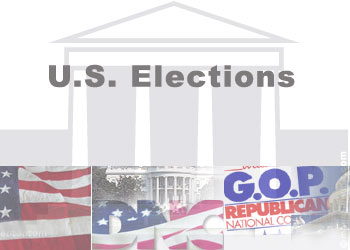
When it comes to the US elections, it seems very surprising that American people throughout their history have mostly preferred to elect a president of one party and a congress of the opposite party.
The reason for such behavior is “split ticketing”. Split ticketing is a vote in which the voter has voted for some candidates of one party and some candidates of the other party.
Studies have been done about why voters choose to split their votes between congressional and presidential candidates who represent competing parties; however, there have been a lot of disagreement among the scholars about why voters split their tickets.
There have been various explanations for the motivations of the split ticket voters and also the conditions under which split ticketing happens. It is not only important to know why split ticketing happens but also to know when and where it happens.
Grofman, Koetzle, McDonald, and Brunell have developed a theory to explain ticket splitting. They believe that it is caused by the difference in median policy positions of voters in district and nation-wide elections. They also believe that split ticket voting is most likely to happen in outlying districts; that is to say in distant districts that are a typical of the party they represent.
Another reason might be the fact that the split ticket voting works best in countries dominated by two parties where a voter is not a strong supporter of either party. One reason for not being a strong supporter of one party can be the ambiguity a voter has about the position of a candidate. Therefore uncertainty and not clarity about candidate position can be one of the reasons for split ticketing. The conclusion that Campbell and Miller (1957) arrived at is to do with this issue. They believe that having a motivation encourages straight voting rather than split ticketing. They believe, “the more highly motivated [the voter] is toward this political objective, the less willing he is to dilute his vote by crossing party lines” (303).
But perhaps the most important reason for understanding the sources of divided government in the US is that voters do so in order to achieve balance between the parties’ policy positions (Erikson 1988; Fiorina 1996; Mebane 2000). That is to say when people are dissatisfied with the performance of legislative branch, they try to modify it through choosing the congressmen of the opposite party.
All in all, the occurrence of divided government in the US is mostly because of voters’ choice of split ticketing. The reasons for such preference are still being hotly debated. Three most argued reasons which were presented in this paper were to do with the difference in median policy positions of voters in district and nation-wide elections, not being a strong supporter of one party and the issues of balance and control.
References:
Carmines, E. G. & Ensley M. J. (n. d.). Policy preferences, party ideologies and split-ticket voting in the United States Retrieved March 31, 2008, from Princeton University Website: http://www.princeton.edu/~csdp/events/pdfs/seminars/Carmines092806.pdf
Burden, B. C. (2006). Strategic voting in the United States Retrieved January 28, 2008, from Harvard University Website: http://www.gov.harvard.edu/student/pjones/strategic.pdf
Karp, J. A. & Garland, M. W. (2007). Ideological ambiguity and split ticket voting Retrieved January 28, 2008, from Sagepub Website: prq.sagepub.com/cgi/content/abstract/60/4/722
Green, B. (2006). The causes of split-ticket voting Retrieved January 28, 2008, from MIT University Website: web.mit.edu/polisci/students/bgreen/split_ticket_voting.pdf
Ghasemi, Z. (2008). Split ticket voting in America – congress vs. executive. Retrieved March 31, 2008, from Ezine Articles Website: http://ezinearticles.com/?Split-Ticket-Voting-in-America—Congress-vs-Executive&id=967775
Split ticket voting. (2008). Retrieved March 31, 2008, from Wikipedia Website: http://en.wikipedia.org/wiki/Split-ticket_voting
